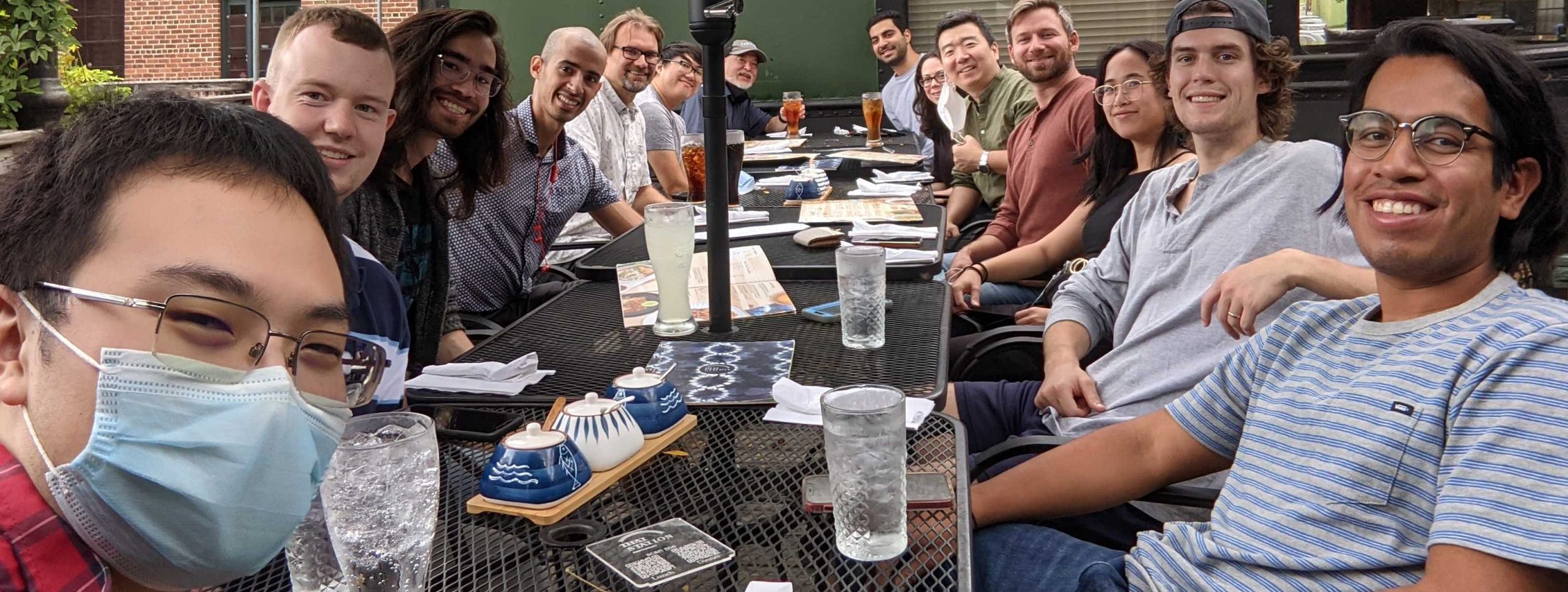Decompression Physiology
Dr. Virginie Papadopoulou (PI)
Current ‘team scuba’ members: Dr. Arian Azarang, David Le, Joshua Currens, Katherine Eltz, Kamellia Karimpour, Andrew Hoang
Video: Interview with Virginie Papadopoulou – DAN ONR STEM
The scuba diving research in the lab is led by Dr. Papadopoulou and funded by the Divers Alert Network (DAN) non-profit research foundation and the DOD Office of Naval Research (ONR). We are broadly working on optimizing the ultrasonic detection of decompression bubbles that grow in the tissues and blood during and after a reduction in ambient pressure and can cause decompression sickness, primarily in the context of scuba diving. We work both on ultrasound analysis and ultrasound acquisition (see below) and our methods span computation, benchtop experimental work, preclinical imaging and human physiology and clinical studies. We have multiple research projects on-going and currently collaborate closely with the Dr. Frauke Tillmans at DAN, Dr. Richard Moon and Dr. Rachel Lance at Duke University, Dr. Peter Lindholm at the University of California at San Diego, Dr. Omer Oralkan at North Carolina State University and Dr. Yalcin Yamaner at Clearsens.
(1) ANALYSIS – Deep learning to automate the analysis of venous gas emboli on ultrasound Doppler audio and echocardiography
Venous gas emboli (VGE) are bubbles that are seen circulating in the blood of some divers for several hours post-dive using ultrasound. Larger and more numerous VGE are statistically associated with a higher risk of decompression sickness (DCS), but the relationship is not a direct one. Differences in VGE and DCS risk have been documented among individuals and in the same individual — even with identical dives. Importantly, VGE evolution post dive varies dramatically, so getting frequent measurements may be important for understanding the influence of VGE on other physiological mechanisms in diving. Toward this goal, our team is working on automating the analysis of VGE on ultrasound (both Doppler audio files and echocardiography videos) using deep learning.
(2) ACQUISITION – Exploring decompression bubbles using advanced ultrasound techniques
Venous gas emboli (VGE) are bubbles that can appear in the blood after a dive due to decompression. These bubbles are detectable using ultrasound imaging after dive where they can often be seen circulating in blood for hours and provide a measure of decompression stress. However, how and where VGE form is still not fully understood. There are also unexplained differences in VGE amounts and post-dive evolution, as well as decompression sickness (DCS) risk, among and within individuals. Tiny microbubbles are hypothesized to be precursors to VGE, and the ability to detect and measure these microbubbles can provide a new tool in studying decompression physiology and DCS risk. We are adapting microbubble-specific ultrasound imaging techniques for detecting these precursor microbubbles and differentiating them from VGE using programmable ultrasound scanners.
(3) Learn more
Recent Publications:
[1] Azarang A¹, Le DQ¹, Hoang A, Blogg SL, Dayton PA, Lance RM, Natoli M, Gatrell A, Tillmans F, Moon RE, Lindholm P, Papadopoulou V. Deep learning-based venous gas emboli grade classification in Doppler ultrasound audio recordings. IEEE Transactions of Biomedical Engineering. 2022; In Press. 10.1109/TBME.2022.3217711
[2] Hoang A¹, Le DQ¹, Blogg SL, Azarang A, Dayton PA, Lindholm P, Papadopoulou V. Automated heart rate detection in post-dive precordial Doppler ultrasound recordings. Undersea Hyperb Med. 2023 First Quarter; 50(1):43-53.
[3] Currens J, Dayton PA, Buzzacott P, Papadopoulou V. Hyperbaric exposure in rodents with non-invasive imaging assessment of decompression bubbles: A scoping review protocol. PLoS ONE 17(9): e0274241. https://doi.org/10.1371/journal.pone.0274241.
[4] Karimpour K, Brenner R, Dong G, Cleve J, Martina S, Harris C, Graf G, Kistler B, Hoang A, Hoang A, Jackson O, Papadopoulou V, Tillmans F. Comparison of newer hand-held ultrasound devices for post-dive venous gas emboli quantification compared to standard echocardiography. Frontiers in Physiology 2022(13) doi: 10.3389/fphys.2022.907651.
[5] McCune E, Le DQ, Lindholm P, Nightingale KR, Dayton PA, Papadopoulou V. Perspective on ultrasound bioeffects and possible implications for continuous post-dive monitoring safety. Diving and Hyperbaric Medicine 2022 Jun 30;52(2):136-148.
[6] Markley E, Le DQ, Germonpre P, Balestra C, Tillmans F, Denoble PJ, Freiberger JJ, Moon RE, Dayton PA, Papadopoulou V. A fully automated method for late ventricular diastole frame selection in post-dive echocardiography without ECG gating. Undersea and Hyperbaric Medicine. 2021; 48(1):73-80.
[7] Papadopoulou V, Lindholm P. An Echo from the past; building a Doppler repository for big data in diving research. Undersea and Hyperbaric Medicine. 2021; 48(1):57-58.
[8] Le DQ, Dayton PA, Tillmans F, Freiberger J, Moon R, Denoble P, Papadopoulou V. Ultrasound in Decompression Research: Fundamentals, Considerations, and Future Technologies. Undersea and Hyperbaric Medicine. 2021; 48(1):59-72.
For an up-to-date list, see: https://scholar.google.com/citations?hl=en&user=qgGU64kAAAAJ&view_op=list_works&sortby=pubdate
Related Press:
https://dan.org/alert-diver/article/measuring-the-unknown/
https://gue.com/blog/micro-bubbles/
https://gue.com/blog/launching-decobubbles-a-crowdsourcing-initiative-for-diving-research/
https://www.unc.edu/discover/bubble-breakthroughs/
https://divermag.com/tiny-bubbles-big-trouble/
